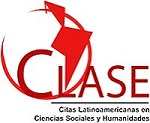Tourist strain of Dutch disease. Economic reasons underlying to decaying of tourist destinations.
Keywords:
tourism Dutch disease, tourism industry, critical economic factorsAbstract
The document proposes a new framework for analysis: a variant of market error known as Dutch Disease that allows find the root economic of life cycle of a tourist destination of Butler. Capital flows to the tourist locations, accompanying its maturation, attracted for speculative investments in real estate. Construction development encourages population growth and soil dwindles, raising its price, together with the consumer basket, which impoverishes residents who su er to access homeownership. This damages the attractives and the traditional productive activities decays. The touristic strain of Dutch Disease leads to the conclusion that the development of tourism, freed its own forces without regulation and coordination, long term can lead to the impoverishment of resident population.Article Metrics
Abstract: 670 PDF (Español (España)): 268References
ALBEROLA, Enrique. y MARQUÉS, José Manuel. (1999). On the relevance and nature of regional in ation di erentials: the case of Spain. En: Documento de Trabajo nro 9913. Servicio de Estudios. Madrid: Banco de España.
ANDRIOTIS, Konstantinos. (2001). Strategies on resort areas and their life cycle stages. En: Tourism Review, 56. West Yorkshire: Emerald. Pp.40-43.
ANDRIOTIS, Konstantinos. (2005). The tourism life cycle: an overview of the Cretan case. En: Paper presented at the International Conference on Tourism Development and Planning, A.T.E.I. Patras, 11-12th of June 2005, Patra, Greece.
BUTLER, Richard. (1980). The concept of a tourist area cycle of evolution: implications for management of resources. En: Canadian Geographer. Num 24 (1). Montreal: The Canadian Geographer.
BRESSER-PEREYRA, Luís Carlos. (2009). Globalização e Competição. Río de Janeiro: Elsevier.
CAPÓ, Javier, RIERA-FONT, Antoni y ROSELLÓ-NADAL, Jaume. (2007). Dutch Disease in Tourism Economies: Evidence from Balearics and Canary Islands. En: Journal of Sustainable Tourism. Vol. 15, nº 6. Abingdon: Taylor & Francis Group
CHAO, Chi-Chur; HAZARI, Bharat; LAFFARGUE, Jean-Pierre; SGRO, Pasquale y YU, Eden S. H. (2006). Tourism, Dutch Disease and Welfare in an Open Dynamic Economy. En: Japanese Economic Review, Vol. 57(4). Tokyo: Japanese Economic Association. Pp:501-515.
CHAO, Chi-Chur; HAZARI, Bharat; LAFFARGUE, Jean-Pierre; SGRO, Pasquale y YU, Eden S. H. (2005). Tourism, Jobs, Capital Accumulation and the Economy: A Dynamic Analysis. En: Paris-Jourdan Sciences Economiques nº16. París: Ecole d’Economie de Paris.
COPELAND, Brian R. (1991). Tourism, Welfare and De-industrialization in a Small Open Economy. En: Economica 58, noviembre. Londres: London School of Economics and Political Science.
CORDEN, Wagner Max y NEARY, J. Peter (1982). Booming Sector and Deindustrialization in a Small Open Economy. En: The Economic Journal, 92, Diciembre. Londres: Royal Economic Society.
CORDEN, Wagner Max. (1984). Booming Sector and Dutch Disease Economics: Survey and Consolidation. En: Oxford Economic Papers, New Series, Vol. 36, No. 3. Oxfordshiere: Oxford University Press. Pp. 359-380.
DEATON, Angus. (1995). El Consumo. Madrid: Editorial Alianza Economía.
DRUŽIĆ, Ivo. ČAVRAK, Vladimir y TICA Josip. (2007). Tourism, welfare and real estate market in small open economy: the case of Croatia. En: U. Zagreb Working Paper Series, nº 07-07. Zagreb: University of Zagreb.
ESTRADA, Ángel y LÓPEZ-SALIDO, David- (2001). La in ación dual en la economía española: la importancia relativa del progreso tecnológico y de la estructura de mercado. En: Boletín Económico. Madrid: Banco de España.
GOOROOCHURN, Nishaal y BLAKE, Adam. (2005). Tourism Immiserization: Fact or Fiction?. En: Fondazione Eni Enrico Mattei (FEEM) Research Paper Series, Working Paper No. 143.05. Milano: Fondazione Eni Enrico Mattei (FEEM).
HAZARI, Bharat y SGRO, Pasquale. (2004). Tourism, Trade and National Welfare. Contributions to Economic Analysis by D.W. Jorgenson, J. Tinbergen, B. Baltagi, E. Sadka y D. Wildasin. Londres: Elsevier
KENELL, Lena. (2008). Dutch Disease and Tourism-The Case of Thailand. En: Lund University Theses and diploma works and papers (Sweden). Lund: Lund University.
NENNA, Marie-Dominique. (2001). Price level convergence among italian cities: any role for the Harrod-Balassa-Samuelson hypothesis?. En: Working Papers nº 64, May. Italia: University of Rome La Sapienza.
MIEIRO, Susana y NOGUEIRA RAMOS, Pedro. (2010). Dutch Disease in Macau: Diagnosis and Treatments. Disponible en Internet: http://www.eefs.eu/conf/Athens/ Papers/593.pdf Consultado 01.07.13
OLIVER, Josep y OGLIETTI, Guillermo. (2004). Crecimiento de los precios en Cataluña 1995-2003: algunas razones de la mayor in ación catalana con relación al área del euro y España. En: Ed. Caixa Catalunya, Informe sobre la Coyuntura Económica nº 98, diciembre. Barcelona: Servicio de Estudios de Caixa Catalunya. Pp.82-100.
OLIVER, Josep y OGLIETTI, Guillermo. (2004). “Demanda de educación superior y productividad: las preferencias de los hogares españoles”. Ed. Caixa Catalunya. Reporte Monográ co en Informe sobre el Consumo y la Economía Familiar nº 40 junio. Barcelona: Servicio de Estudios de Caixa Catalunya.
PORTO, Natalia. (2005). Economía del Turismo. Un enfoque desde la Teoría del Comercio Internacional.
Tesis doctoral]. Universidad Nacional de la Plata, La Plata.
SINCLAIR, M. Thea. (1998). Tourism and Economic Development: A Survey. En: The Journal of Development Studies. Vol. 34, nº 5. Canterbury: Department of Economics, University of Kent.
TURNER, Louis. (1976). The International division of leisure: tourism and the Third World. En: World Development. 4, 253-60. Michigan: University of Michigan.





















